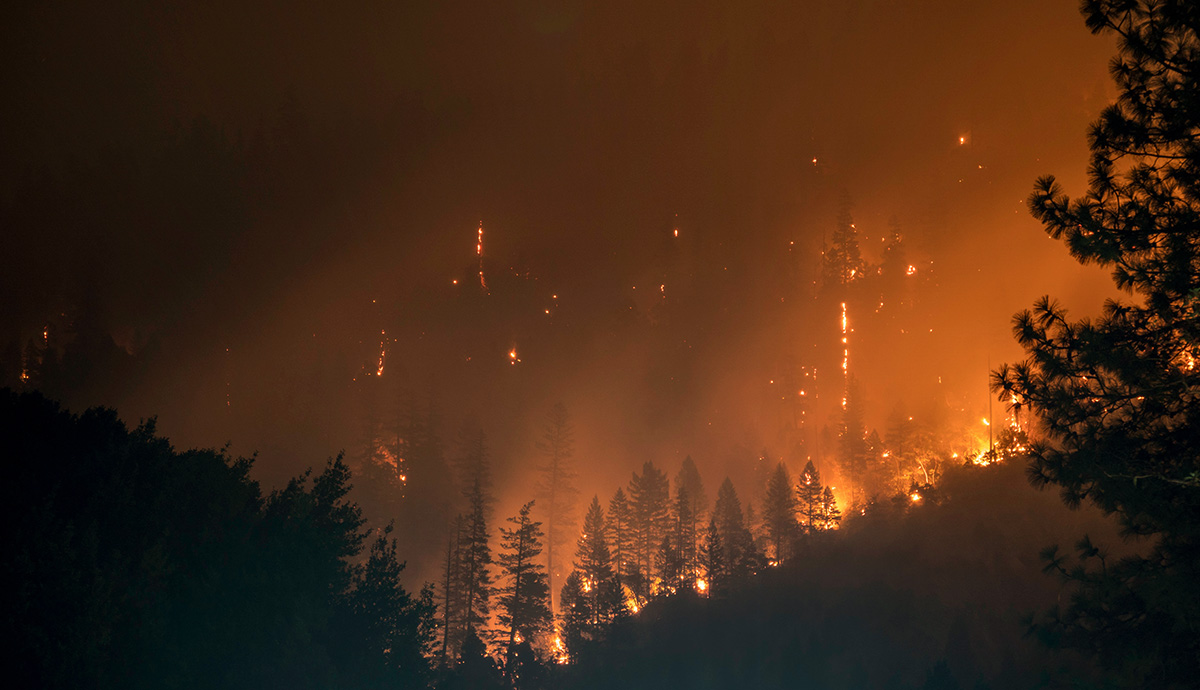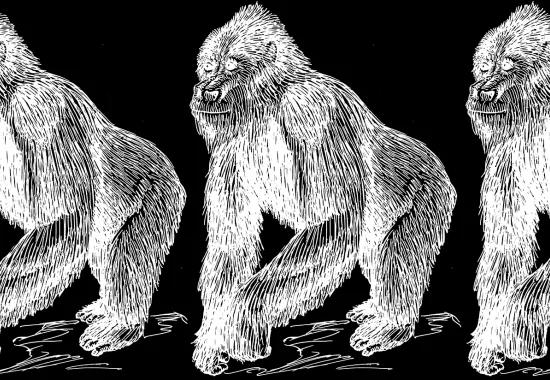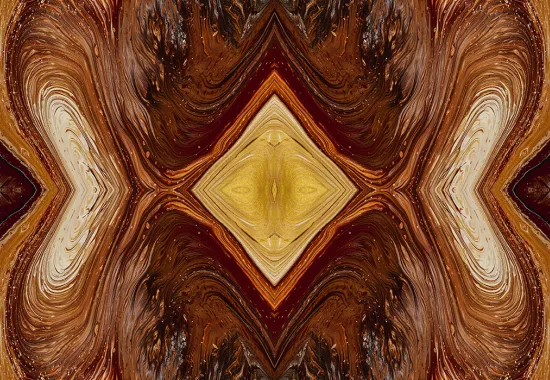Chasing Fire
In early August we are in western Idaho chasing lightning bolts that always beat us to the ground. The Payette National Forest is dry, with red needle cast and sagebrush covering the ground and ponderosa pines dotting the foothills. The hills and canyons are sharp in places and rolling in others, but together the mountains serve as a massive catcher’s mitt for lightning. Lightning that drives up steadily on the backs of giant clouds from the never-ending desert. The desert that stretches from the Gulf to us. The storms are patterned, predictable—that’s why we’re here. Why we lie up at night, sleeping on the ground at a remote ranger station with something like hand-crank Wi-Fi, only powerful enough to check the radar on our phones to see if lightning will start a fire to keep us busy the next day. The duality of wildland firefighting, someone says. You’re either getting your ass kicked or kicking it.
I can’t sleep. I turn sideways, so I have a view downcanyon and out over the whole expanse of high desert, and see distant flashes hovering in the sky. At night in a moonless sky, it’s hard to see the clouds that play host to lightning’s energy, so the faraway flashes seem to appear from nothing. Like flickering yellow and white light bulbs high up near the roof of the world. When they draw closer and into the mountains, the thunder I hadn’t heard before now shakes branches loose from trees and causes needles to jump around, and the lightning has a start and end, jagged in between, finding outcrops of rocks or isolated pine trees high on reaching peaks. The electricity in the air calls my hair to attention. In a bright flash I see my squad boss standing, prepared for rain that never arrives, scribbling in a notebook every time he sees where a bolt lands. Without phone service, none of us know, but as he writes furiously, trying to keep up with the increasing flow of bursts, scientists are working on an IPCC report which says that there’s essentially nothing we can do at this point.
But we already knew this in May. Deep into the backcountry in no-man’s land between Idaho and Wyoming, we watch a fuels crew set off a prescribed burn at eighty-five-hundred feet while there is still white snow on the ground. They drip lighted fuel onto a patch of downed trees and spring back in surprise as it rips upward immediately. We are lined up on a dirt road, holding the burn, which means standing close to the flames and sucking smoke, ready in case fire jumps the road. As the fire climbs and roars like a jet it becomes harder to brave, but I’m stuck staring—it’s too beautiful, too huge, too alive—my face glowing hot. I see a lone sagebrush thirty feet away start to shiver and shake and then it pops all at once and becomes fire. Within twenty seconds we are walking, jogging, then sprinting with our fourty pounds of gear as fire jumps the road, uphill and around the flaming front that it has become. I see wide eyes and smiles around me; we’re gripped from the escape we just had to make, we’re psyched at the new excitement of the day. Later, my crew boss gathers us to say he had never seen that before. Fire did not used to behave like this, at this elevation, at this time of year, in these conditions. But fire does not behave anymore. It sheds genre. It burns through trees still wet from winter.
It’s only my second year on the crew, which means I don’t know shit, so I ask questions, and I listen. In southern Utah’s heat, we hide beneath juniper trees. When junipers burn, the berries and twigs they’ve shed over the years wheeze and complain beneath them and release a cat piss smell. Under ones not yet burnt we try to escape the sun. Our Nomex shirts used to be bright yellow, our pants green, the Kevlar chaps sawyers wear orange. Now they are browned and blackened by charcoal and dirt, and we blend into the desert. Clear sweat teases its beauty against our ash-covered faces and drips onto the earth below and we can hear the drops sizzle against the burnt-up grass like bacon grease. The water from our plastic canteens that are kept nested in two side pockets of our faded black packs is scalding. I breathe shallow and slow, relishing in the canyon’s midday calm before my head is filled again with the chainsaw’s mechanical roar. I think that if I follow this slot canyon until it winds and deepens I must be able to find the cold air slinking around carefully at the bottom of the desert, and a puddle of cold, green water to jump into.
I know how bad the drought is in the West, I can feel it in the heat and I can see it in front of me in fire that’s hardly ever acted this way. I listen when there’s talk of the drought of 2002, or the Yellowstone Fires of 1988, or even the Great Fire of 1910. Talk of these watershed events proves two things: that though fire seems to disobey logic and reason now, it has done so in the past, and that we need to reach farther and farther back to find parallels to the fire activity we’ve seen in the last decade. But it’s easier to find never-befores—the summer is littered with them. The Caldor Fire in California, which would’ve swept through the city of South Lake Tahoe in a night if not for a fortuitous wind shift, was only the second fire ever to cross from the west to the east side of the Sierra Nevada mountain range. The first was the Dixie Fire, the largest single-source wildfire in California history, which also burned in 2021. In Oregon, the Bootleg Fire generated fire weather conditions never seen before, and in western Montana and the Idaho panhandle, large fires sparked earlier than firefighters there had ever experienced. When we are in the northern Idaho rainforest, low-mountain country that hugs Washington and Canada, the heat record is broken multiple times over.
The trees talk up here, and they chatter and shriek all night long. Forests chock-full of tamarack, Douglas fir, ancient cedar, mountain hemlock and Engelmann spruce, they sound like coyotes in their surprise. They don’t remember heat like this, or nearby fires sparking so early in the summer, in this place that buzzes and breathes. During the day, I walk through the cedars, feeling their unfamiliar leaves and bark. My squad boss yells from fifty feet downhill: watch out for IEDs! He’s mostly joking, but there is a Forest Service-wide warning out for this beautiful forest we’re in. Anti-government separatists have been planting explosive devices. I come across a giant cedar that was victim of a different explosion: twenty feet up, it looks as if it had been torn in two, with straps of smoking bark sticking up like an amputation gone wrong, and massive pieces of wood strewn about as violent evidence of the lightning strike. The trees still standing spew fireballs back at roiling thunder cells which pass overhead like thick ocean currents. In the rainforest with no rain, we talk too.
Stories are traded like cards. I hear about the way it was through coughs that wrack bodies. In the Great Fire of 1910, the largest wildfire in US history, crew foremen used to grab young men from farms and bars and hand them hoes and crosscut saws to form a crew. How Ed Pulaski, who now has the Pulaski tool named after him, led his crew of felons, farmers and kids into a cave to avoid being burned, just fifty miles from where we are now. Still, it’s estimated that seventy-five firefighters died in the fire. How we used to fight fire under the out-by-ten-a.m. rule, which didn’t allow any fire on the landscape, helping to create the overgrown, primed-to-burn forests we have today. How, as recently as the nineties, hotshot crews used to work four-hundred hours of overtime in a busy summer, while they now work at least one-thousand overtime hours every year. Working that number of hours in a six-month period grinds down even the toughest bodies, but with the seasonal work, low pay, and lack of benefits, it is also the only way most firefighters can earn a living.
We are sitting pretty at six hundred hours of overtime. We get called to initial attack a fire at two in the morning. Tucked between a defunct ski resort and a stretch of newly built seasonal homes, there is a stand of fir trees which look black against a moonlit night sky. Some of the trees burn, some will soon. The tips of trees are like cresting waves. We stand to the side as someone fells a flaming tree, chugging powdered coffee and rushing to eat pocket snacks. We throw little sticks and rocks at each other, trading friendly insults, hilarious in our exhaustion. The tree falls and a rush of fire darts into the sky, and I see alluvial washes of embers chasing after the flames before being swept carelessly downwind, to flutter and extinguish in the air, or to start countless new small fires downhill. Stars dance and blink across the sky, and looking up my headlamp picks out one in particular. The distance between us closes and I feel like a child.
We wake up every morning in the dirt, head to the fire, cut and dig line around it, then head back to the dirt to sleep.
There’s a gap between what scientists understand and what people have experienced, and wildland firefighters sit in that gap with a tired grin and a mouthful of chew. There’s a lot of science—meteorology, fire science, climatology, atmospheric physics, to name a few—which go into wildland firefighting. Over time, using these increasingly refined sciences alongside statistics, which at times enables us to predict fire behavior days before it happens, we’ve been able to decrease firefighter deaths and almost keep up with the changing fire environment. But in the field we sharpen our tools in the dirt before bed and repair broken boots with super glue and p-cord. The currency between us is experience. We talk about slides—each slide is a memory a firefighter has of an incident they were on, when fire behaved a certain way, and they reacted a certain way. The more slides you have to draw from, the more fire behavior you’ve seen, the more likely it is you’ll figure out what to do when you find yourself in a situation you’ve never been in before. In today’s climate, where unprecedented fire behavior is commonplace and we often find ourselves in new situations, slides are even more essential. Slides of extreme fire behavior are ingrained into experienced firefighters, so that when the situation arises, they react quickly. ‘No shit, there I was’ tales around the campfire double as practice for the real thing. Stories, then, in concert with science, are what keep us alive.
There is the simple formula to put out a wildfire: work long, hard hours, using chainsaws and hand tools, to remove fuel from the fire’s edge to secure it. After the edge is secure, go through on hands and knees and touch everything to make sure it’s out. Even with aircraft, engines, bulldozers, it can take thousands of people working around the clock for months to put large fires out. We wake up every morning in the dirt, head to the fire, cut and dig line around it, then head back to the dirt to sleep. We work sixteen-hour days for two- or three-week tours, then have three days off before the next one. Modeling and predictive services for weather and fire behavior are beginning to play a large role, and most of the time, predictions are accurate. But in a dangerous environment, most of our understanding comes from experience—from the relationship we’ve each built with fire. And central to that relationship, is the knowledge that shit can get gnarly fast, so we better be able to roll with the punches. At a morning briefing, an incident meteorologist might tell us to watch out for extreme fire behavior in the afternoon, but it’s up to us to monitor changes in weather and fire behavior throughout the day, so that we know when to keep plugging away, and when to bail. So we’re resistant to predictions, we don’t believe things until we see them for ourselves. But one prediction is clear, and we have seen it for ourselves: the American West has become—and will continue to get—more likely to catch fire, and more likely to burn bigger.
We are sent south from the Teton area, to the North Rim of the Grand Canyon for a new start, only to find it had been monsooned on, effectively stamping it out, by the time we arrive a day and a half later. So, we are sent back up north, to a fire an hour from where we came, in the Salmon-Challis National Forest. When we arrive, it’s clear why I’d been told it was a storied—and dangerous—place to fight fire. From the network of creeks and rivers, the hills shoot two thousand feet straight upwards at one-hundred-percent slope or steeper. One side of the canyons are covered in all kinds of pines—Dougs, lodgies and whitebarks—while the other, southerly facing sides are imposing walls of flammable brown grass, sprinkled with the more desert-happy sagebrush or ponderosa pine. The whole place is admired by a dull orange sun; made somber by the smoke squatting all throughout the valleys. At sunset, it feels calm, but with fast-burning fuels on that steep a slope, fire can cover hundreds of feet in seconds.
For days, then, we wait. We cut contingency fireline miles from the actual fire. Even so, every morning and again in the afternoon we rehash our escape route, should the winds change and blow the fire upcanyon at us. Five days into our time at the fire, we’re rushed to a cobalt mine, which is rumored to be the only working cobalt mine in the country, to fight the fire direct. Apparently we have the President’s best wishes. We pick up the line near an immense sludge pond and fall into the normal routine: cut, move, dig. It feels good to be working, to have ash everywhere, to see open flame. The next day, we keep working, picking up where we left off. Only this time, the winds pick up. The NOAA forecast predicted this, but not to this extent. Winds flow in at sixty, seventy miles per hour. We end up huddled as a crew in the only spot of burnt out black where there are no trees within falling distance. A gust sprays my face with sticks, and through the swirling ash I see twenty to thirty trees drop one after another. Green trees, dead trees, it makes no difference. All across radio frequencies, people are checking in on one another. It’s frantic, dangerous, and fun as all hell.
The next day the incident commander pulls us from the line, because the command team doesn’t know whether cobalt—in the air, the dirt, the trees that turned into the smoke we breathed in—is poisonous to inhale or not. With the down time, we sit at the bottom of a socked-in valley filled with that same smoke, and we tell stories about the last couple days—the medevacs that led to us being pulled from the line, the wind event. Everyone has their own version of the events. Even our crew boss chimes in, telling us he’d never seen anything like what had happened, with the wind event; here was another new slide for him. We feel jerked around, misled, and unknowledgeable. But we’re used to that. We’re flexible; we laugh at ourselves and the job. There’s a saying when the work gets shitty: the best fire is the one you’re on.
So why do we chase lightning? Why do we stick our bare hands into the burnt carcasses of trees to see if they’re still hot, though we’re not sure if they might burn us? Not just because it’s what we’ve always done, but because the absurdity makes sense. Nonsense lives in the space between facts and experience, and in the dissonance between the macro and the micro. When a grand canvas is painted, involving ineffective politics, millions of miles of ice caps melting, a decried worldwide economic system, then sure—it’s ridiculous for four of us with garden tools to drive, circling on old logging roads cut into mountains, after a wisp of smoke reported by a tourist driving through a canyon miles from here. But when the smoke turns out to exist, when we stamp out the small fire before it slicks off the entire hillside, and we hear the aspen around us dance in the wind, the absurd becomes intelligible.
Even so, there are many more moments to the opposite effect. Times when the job feels so ridiculous, it can’t be coherent. But we know the worst comes partnered with the most euphoric; these are the moments we learn to embrace. When we are asked to dig and cut like our lives depend on it in the middle of the Nevada desert because the sage grouse is a protected species, and on the third day we look up from our work to see a family of those grouse waddle past us and right into the flaming column. No wonder those motherfuckers are endangered. Or when we are on day eleven of an assignment and the incident commander keeps us around even though the fire’s out. On a day like this, three of us are sent one hundred feet into the black, trudging through charcoal trees and next to candied fields painted by retardant drops. We’re sent to knock out a smoking stump, which essentially means, keep busy. For the next two hours, then, we take turns hitting the stump with our Pulaskis, scraping away the embers to let them cool in the open. We laugh, imitate friends and bosses, and spit. Downhill, away from the fire, the whole of Montana stretches out, just for us. On these days that lack meaning, we find it in ourselves, and in each other. My boss once said that when you’re working a stumphole, on some mountain, on a one-hundred-degree day, and you’re shootin’ the shit with your crew, life just makes sense.
So when friends and family across the country ask why there is so much smoke and haze in the air, I joke that it is because I’m not doing my job properly, and hang up the phone to take off my left boot before bed, but not my right, since my ankle is so swollen I wouldn’t be able to get the boot back on in the morning, and it has been this way for weeks. We sleep in a squat valley, twenty of us strewn across the prairied ground in sleeping bag shaped bumps. Just a few miles away, in the steep, forested mountains, the fire is only twenty-percent contained. We can just make out its nighttime glow. And there are cottonwoods here, and in them the wind sounds like rain, and rain also comes as dark and meandering virga over the horizon as dogs are beaten and yelp on private land near where we sleep, and there are trains whistling and gunfire pop pop popping in the just barely audible distance. I roll over to my side, and sleep with blades of bear grass crawling over my hand.
Recommended
Schizophrenic Sedona
Recense (realized)
Notes on Hands






